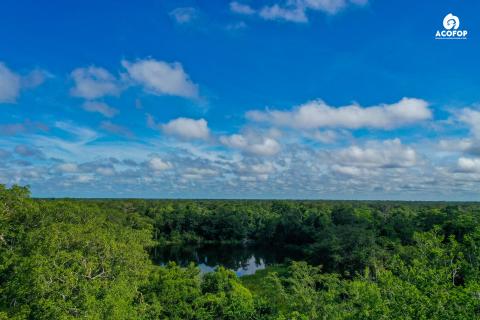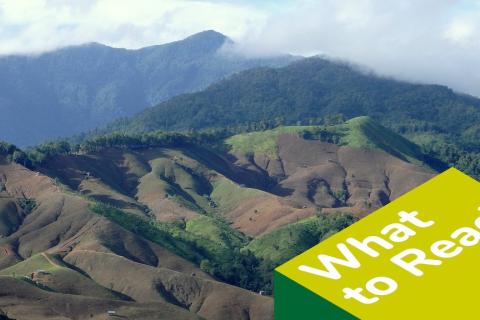Sacred forests in Africa: safeguarding ancestral heritage
Protecting USAID’s legacy of land knowledge
The Land Portal has been following the news about USAID’s shutdown with much sadness and concern. During its 60-plus years of existence, the agency has acted on many fronts of international development, funding and managing thousands of initiatives to ensure good health, education, food security, women’s empowerment and, not least, good land governance in many countries of the Global South.
How global climate initiatives can risk Indigenous women’s land rights
Recognizing Indigenous lands is important to achieving forest and biodiversity targets and mitigation goals. This is directly acknowledged in initiatives like the Global Biodiversity Framework’s 30x30 Target, Reducing Emissions from Deforestation and Forest Degradation in Developing Countries (REDD+) and Net Zero by 2050.
However, the actions necessary to achieve these targets can sometimes result in pressure and infringement on Indigenous and local land tenure systems that are already insecure due to lack of formal recognition and communities’ weak participation in decision-making related to climate initiatives. These pressures are experienced differently by women and men because of social, economic and political dynamics that influence land tenure and community governance systems. Failure to account for gender when implementing climate initiatives can risk eroding the traditional land entitlements of women and trigger additional negative impacts.
Webinar recap: land rights and critical minerals
Transforming finance for sustainable development: Rethinking Official Development Assistance for Indigenous Peoples and Local Communities
On November 27, 2024, the Global Donor Working Group on Land convened a pivotal session as part of the Global Donor Platform for Rural Development Annual General Assembly (AGA). Under the theme “Redefining and Enhancing the Quality of Finance for Sustainable Development,” the event focused on optimizing Official Development Assistance (ODA) to address the needs and rights of Indigenous Peoples and Local Communities (IPLCs). The session spotlighted practical approaches to improving the inclusivity, efficiency, and impact of development finance amidst intensifying global crises.
Protecting Biodiversity Hinges on Securing Indigenous and Community Land Rights
In 2022, countries reached a historic agreement to halt biodiversity loss by conserving at least 30% of land and water by 2030. This marked a critical step toward protecting the world's precious remaining species and ecosystems. But that's not all: The Global Biodiversity Framework, as it's known, also explicitly calls on countries to recognize and uphold Indigenous Peoples and local communities' rights in their conservation strategies.
Bridging the Gap: Empowering Indigenous Communities Through Direct Climate Finance
Protecting the Roots of a Sacred Tree
With USAID support, an Afro-Colombian community received a collective land title, guaranteeing ownership of their traditional lands.












